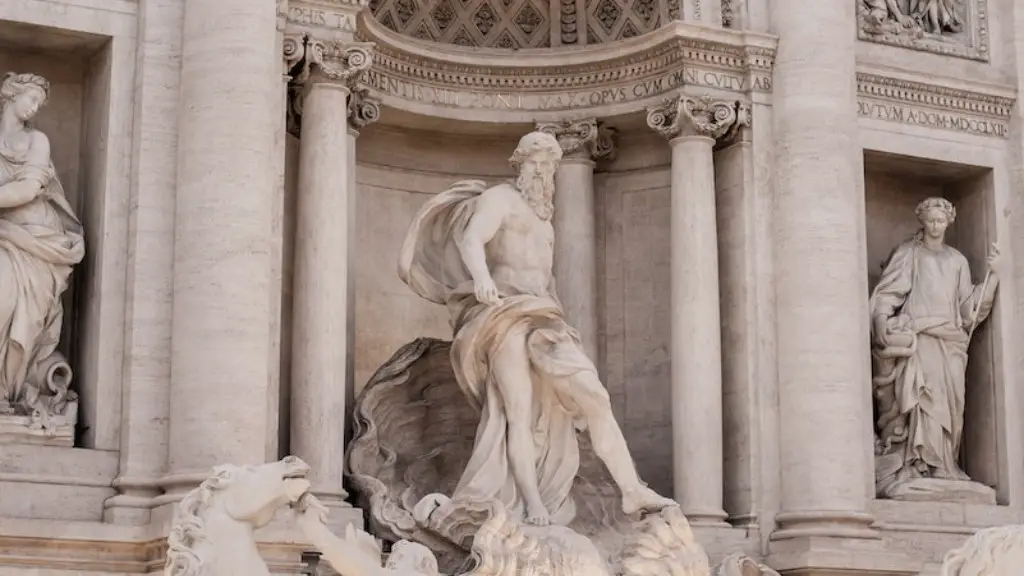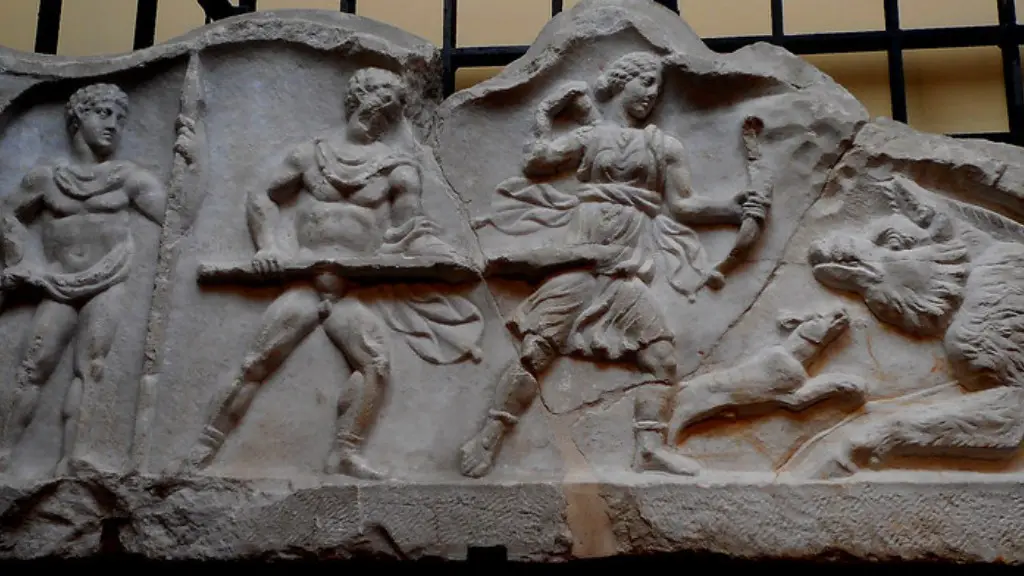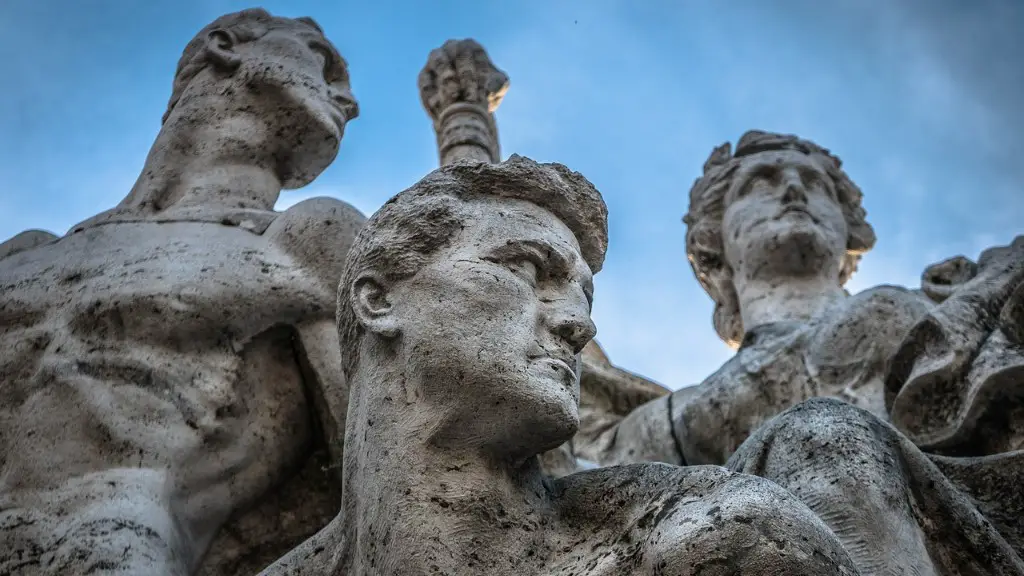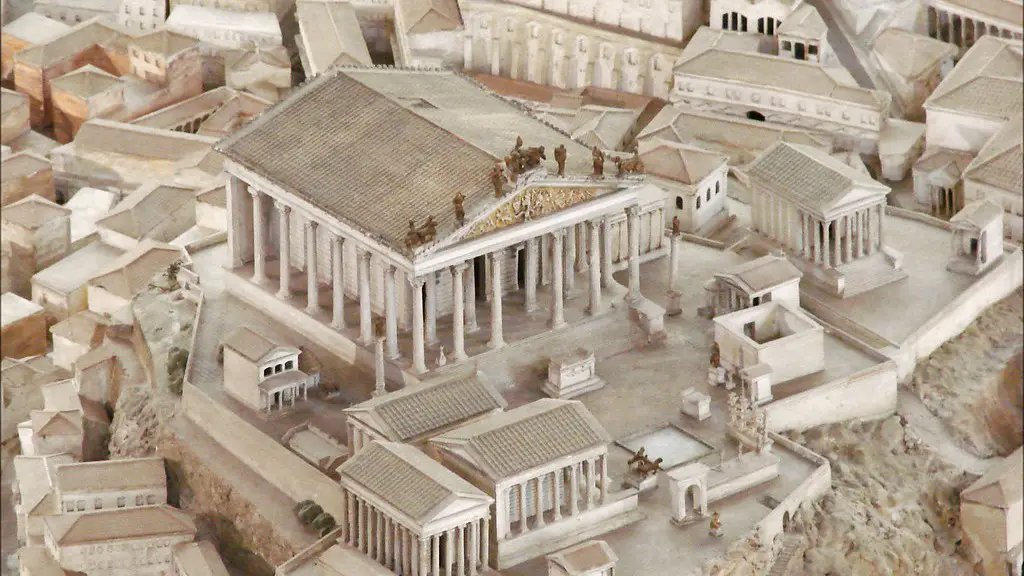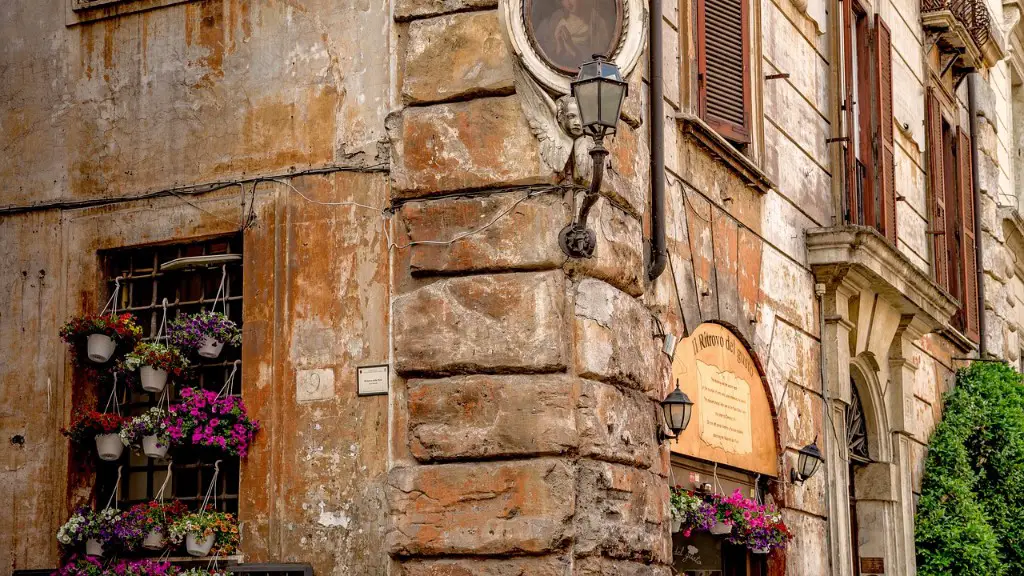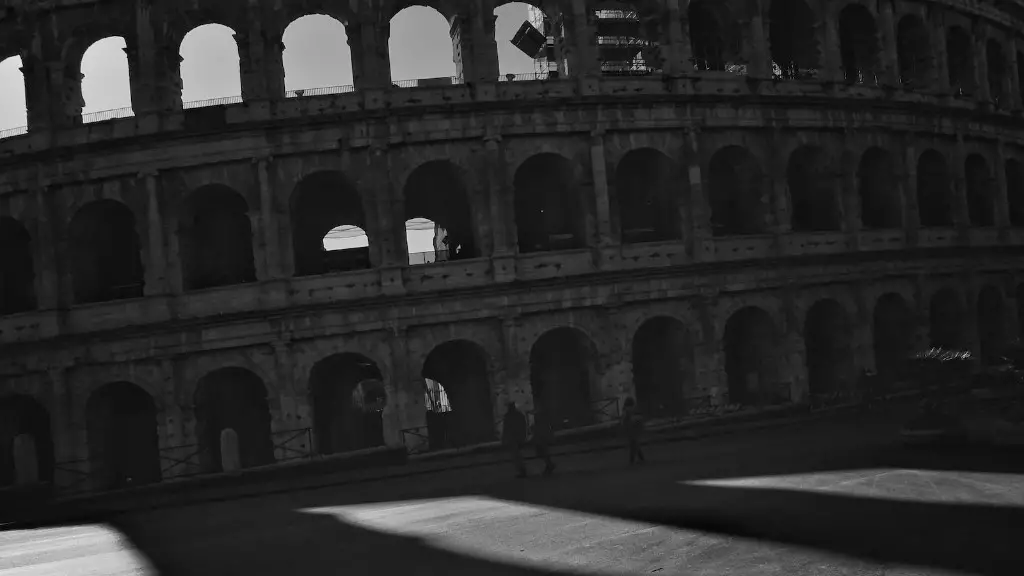The city of Rome has a rich and powerful history, with its geographical features being extremely important to the development of the city since its earliest days. Ancient Rome was located in the central-western region of the Italian Peninsula, and had a variety of geographic features which helped it become one of the most powerful cities in the world. From the Tiber River to the seven hills, and from the diversity of its climate to the abundance of resources, Rome was located in an extremely favorable geographic area.
The two major rivers which bounded ancient Rome’s territory were the Tiber River and the Aniene River. The Tiber was Rome’s main source of water and a major trade route, as it connected Rome to the Mediterranean Sea, to the rest of the Italian Peninsula and some parts of the provinces beyond. The Aniene, on the other hand, rose near Reate and was used mostly for irrigation.
Rome was located on seven hills, each with its own unique name and characteristics. The most important of these hills were the Palatine Hill, the Capitoline Hill, and the Aventine Hill. The Palatine Hill is the center of Rome and where the historical first settlement was located. The Coliseum was constructed between the Palatine Hill and the Caelian Hill by order of Emperor Vespasian in 72 A.D. The Capitoline Hill served as the political center of Rome and its main marketplace. The Aventine Hill was where the poor and refugees used to live and it was also where the first plebeian temples were built.
Rome used to have a mediterranean climate, but due to the environmental changes in recent centuries, the climate has grown dryer and warmer. Since the city is located in the center of the peninsula and is surrounded by mountains and hills, the city still enjoys a mild climate and warm temperatures.
The area around Rome was also rich in natural resources such as clay, limestone, copper, and iron ore, which the Romans used to build their homes, monuments, and infrastructure. The clay was used to make pottery, and the iron ore was used in many aspects of metallurgy. The plentiful limestone was used in the construction of the walls, and the copper was used to make coins.
Rome’s geographical location was also key to its success. The city was located in a strategic position and had access to many major trade routes. This gave traders and merchants the ability to easily bring goods and ideas to Rome from the surrounding areas. Rome was also located at the hub of the Mediterranean Sea, giving the city access to a wealth of resources and allowing it to easily expand its influence and power.
The geographical features of ancient Rome, such as its rivers, hills, climate, and resources, served as the foundation for the city’s development and prosperity. Through their access to the sea, Rome was able to benefit from the riches of the Mediterranean region and beyond, while their location at the heart of the Italian Peninsula gave them an advantageous position. By taking advantage of its geographical features, Rome was able to become one of the most influential and powerful cities of the ancient world.
The Influence Of Wind On Ancient Rome
The wind had a great influence on Ancient Rome by bringing in trade and transportation, allowing them to access resources from far away. It also carried diseases, which had a devastating impact on the city’s populations. The winds also blew away the smoke from their fires and made the air around the city cleaner.
The winds that blew across Rome were generally warm and carried moisture across the city. In summer, they could be warm and heavy, while in winter they could be cold and dry. The winds that came across the sea gave Rome access to goods and ideas coming from the rest of the world. They also enabled traders and merchants to bring goods to Rome from cities on the coast and other parts of the Mediterranean. This allowed Roman merchants to benefit from the wealth of resources available in the region. The wind could also spread news of events around the city quickly and over long distances.
At the same time, the wind brought the risk of disease, usually from the western portion of the Mediterranean. Diseases such as plague, smallpox and malaria often swept through Rome, resulting in large losses of life. In times of an outbreak of one of these diseases, Romans would try to purify the air by burning storax or frankincense, but this was usually not enough to ward off the spread of the illness. Finally, the winds helped keep the air around Rome cleaner by constantly blowing away the smoke from the fires. This helped Rome remain healthier than other cities in the region during the times when smoke was more common.
The Impact Of Rome’s Geographical Features On Its Development
The geographical features of Rome had a great impact on the development of the city. Rome’s two rivers, the Tiber and Aniene, were both important to the city’s economy, as they provided a connection to the sea and to other parts of the Mediterranean. The seven hills provided a solid foundation for the city’s development, while the mild Mediterranean climate allowed the city to remain healthy and comfortable year-round. The abundance of resources such as clay, limestone and metals also enabled the Romans to build monuments, infrastructure and weaponry. Finally, the strategic location of Rome in the heart of the Italian Peninsula gave it access to trade routes, giving citizens access to goods and ideas from all over the world.
The resources located in the immediate vicinity of Rome gave the city a great advantage over its rivals. The forests provided timber for ships and houses, while the other resources allowed the city to build roads, monuments and infrastructure. The water sources were essential to the city’s growth, while the mild weather made life more comfortable. The strategic location of Rome also allowed it to benefit from trade with surrounding regions and access to goods from far away.
By taking advantage of its geographical features, Rome was able to become a powerful and influential city. The resources allowed Rome to build a strong economy and infrastructure, while the strategic location of the city gave it access to resources from across the Mediterranean. Rome was able to grow and thrive through its geographical features, and those same features remained important to the city even as it changed and developed over the centuries.
The Defensive Strategies Used By Ancient Rome
Ancient Rome used a variety of defensive strategies to protect itself from attack. The first line of defence was the city’s walls. The walls were made of stone, brick and wood and ranged in height from three to seven metres. As the city expanded and grew stronger, more extensive defences were added, such as towers, gatehouses, moats and more. The city was also surrounded by a garrison of troops to protect it from invasion.
The city also employed a variety of strategic tactics to further protect itself. The city was divided into districts, each controlled by a military commander, or praetor. The military troops were organized into cohorts, which were divided into centuries, and a group of legions from different parts of the empire could be put together to form an army to defend the city if necessary. To confuse and outmanoeuvre the enemy, troops from different parts of the empire could march under enemy flags and surprise the enemy with unexpected tactics.
Rome also made use of other tactics such as subterfuge, sowing discord among the enemy’s ranks, and forming alliances with lesser powers to keep the enemy at bay. These strategies were also used in siege warfare, when the city was attacked by a larger force. The principality could also employ psychological tactics, such as assigning a “guardian angel” to troops who were going into battle in order to give them a sense of protection. Rome also relied on spies and scouts to gather intelligence on the enemy and to track their movements.
The Decline Of Ancient Rome
The decline of ancient Rome was caused by a number of factors, including political instability, economic problems, local rebellions, and constant warfare. During the second and third centuries, Rome was torn by internal conflict and was continually in a state of war with its neighbors. The military became increasingly overstretched and unable to respond to all threats, resulting in the breakdown of order and the loss of territory. Meanwhile, the rising costs of warfare had resulted in Rome’s finances becoming overextended, leading to a breakdown in infrastructure and the crumbling of public services.
The empire also suffered from a series of massive invasions, starting with the Goths in the third century, who overran important cities in northern Italy, forcing the empire to abandon them. In the fifth century, Rome was invaded by the Vandals, who sacked the city and looted its riches. In 455, the city was sacked again by the Visigoths, and the western half of the empire was dissolved. As the centuries progressed, Rome’s military strength and economic power continued to decline, until it eventually disappeared in the west in 476.
The political and economic problems of the empire, combined with the constant warfare and the invasions, led to its eventual decline. Rome was unable to respond to threats and its finances were stretched to breaking point. In addition, a series of destructive invasions destroyed much of the city’s infrastructure, and Rome’s political power slowly collapsed.
The Legacy Of Ancient Rome In Popular Culture
Ancient Rome is often considered one of the most influential civilizations of ancient times, and its legacy can be seen in popular culture today. Roman mythology and literature have been incorporated into Western literature and art, while the Latin language is still used by many people around the world. Roman architecture and engineering have been adopted and adapted in many instances, from the Renaissance period to modern day.
In addition, Romans have been romanticized in popular culture, from the epics of Virgil and Homer to modern movies like Gladiator and Agora. The political ideals of the Roman Republic, with its republican government and rule of law, are still seen in today’s governments, and the city of Rome itself is a popular tourist destination. Finally, the words used by Roman speakers in everyday life have been adopted into English, French, Spanish and other languages. Roman numerals are still in use today, and Roman culture still influences the way we live.
The legacy of ancient Rome lives on in many aspects of our lives today. Its culture and ideas remain influential, while its monuments and engineering feats still inspire awe and admiration. From literature to language, engineering to government, the legacy of Rome lives on in the world today.
